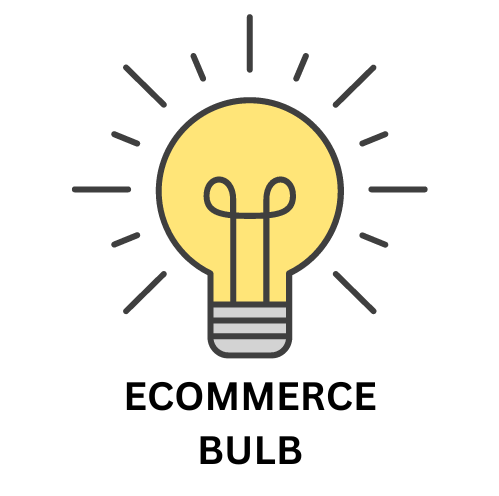
In order to decide which ecommerce platform to use, Sellfy vs Weebly. A detailed comparison between features must be thoroughly done. If you want to decide which eCommerce platform to choose, there are many things to consider.
These are some examples of these factors:
- Cost.
- SEO friendliness.
- Page load speed.
- Canonical website URL.
- Indexing Control.
- Customizable HTML capabilities.
- Sitemap Generator.
- Integration with Google Analytics.
- Product Tagging and Categorization.
- Batch Uploading.
- Mobile Optimization.
- Built-in Blogging and Marketing Features.
- Social Sharing Buttons.
- Content Management Capabilities.
- Discount and promotion code tools.
- Easy to use Checkout.
- Reporting tools and custom reports.
- Integration of email marketing tools.
- Multiple payment options.
- Flexibility to add new eCommerce features.
- Exclusive features.
- Cons and pros.
Here we’ll discuss these factors to help you decide which platform is better for you, Weebly or Sellfy. And at the end of the discussion, we’ll recap and make a comparison for the scores of all these points to find out which eCommerce platform has the higher score, so that you’ll have a good view about both of them.
Read Further: Top 6 Sellfy Reviews

Pricing (Sellfy vs Weebly):

When comparing pricing for Sellfy and Weebly, it’s crucial to consider not just base monthly fees but also potential hidden costs, transaction fees, and feature limitations within each plan. Here’s a breakdown to help you choose the platform that best aligns with your budget and needs:
Sellfy:
- Four tiered pricing plans: Start from $19/month for the Basic plan, offering limited features and bandwidth. Higher tiers like Pro ($49/month) and Business ($99/month) unlock more features, bandwidth, and integrations.
- Transaction fees: Sellfy adds a percentage fee (2-5%) on top of your chosen payment gateway’s processing charges, which can impact your net profit margin.
- Limited bandwidth: Free and lower-tier plans have bandwidth limitations, exceeding them incurs additional costs. Higher tiers offer more bandwidth but might still have limitations for high-traffic stores.
- App integrations: Some third-party apps in their marketplace have additional fees, beyond your Sellfy subscription.
Weebly:
- Five pricing plans: Start from $5/month for the Free plan (limited features and Weebly branding). Paid plans like Personal ($6/month) and Pro ($12/month) offer progressive feature sets, e-commerce functionality, and ad removal.
- No transaction fees: Weebly doesn’t charge additional fees on top of your chosen payment gateway’s processing charges.
- Unlimited bandwidth: All paid plans offer unlimited bandwidth, eliminating concerns about exceeding usage limits and incurring extra costs.
- App integrations: Some Weebly apps might have additional fees, but generally fewer than Sellfy due to Weebly’s broader app ecosystem.
Key considerations:
- Expected sales volume: Factor in potential transaction fees on Sellfy to compare its effective cost against Weebly’s base plan prices.
- App usage: If you plan to use many third-party apps, compare platform app stores and associated costs to avoid budget surprises.
- Bandwidth needs: Weebly’s unlimited bandwidth on paid plans simplifies planning and avoids potential overage charges on high-traffic sites.
- Feature priorities: Evaluate the features offered in each plan and choose the one that best aligns with your current and future eCommerce needs.
Conclusion:
Both Sellfy and Weebly offer competitive pricing structures, but Weebly stands out for its no transaction fees, unlimited bandwidth on paid plans, and potentially lower overall costs for businesses with higher sales volume or planned app integrations. However, Sellfy might be more budget-friendly for businesses just starting out and with low sales volume, especially if their needs align with features on its lower-tier plans.

SEO Capabilities (Sellfy vs Weebly):

Choosing an eCommerce platform that empowers your online store’s visibility through search engine optimization (SEO) is crucial for attracting organic traffic and boosting sales. Here’s a breakdown of Sellfy and Weebly’s SEO capabilities to help you make an informed decision:
Sellfy:
- Basic SEO tools: Offers built-in tools for editing page titles, meta descriptions, headers, and alt tags.
- Limited control: Lacks advanced SEO features like custom URL structures, robots.txt editing, and sitemap management.
- Content management: Provides simple blog functionality for creating content with SEO best practices in mind.
- Mobile-friendly: All Sellfy stores are mobile-responsive, contributing to a positive user experience and potential ranking signals.
Weebly:
- More robust SEO tools: Offers a wider range of features like custom URL structures, robots.txt editing, sitemap generation, and structured data markup.
- Greater control: Provides more control over on-page optimization elements and technical SEO aspects.
- Content management: Weebly’s blog platform offers more advanced features and flexibility for publishing SEO-optimized content.
- App integrations: Weebly’s app marketplace offers several SEO-specific apps for further optimization and analytics.
- Mobile-friendly: All Weebly websites are mobile-responsive, ensuring accessibility and potential ranking benefits.
Key considerations:
- SEO expertise: If you have limited SEO knowledge, Sellfy’s basic tools might be sufficient. Weebly’s advanced features require more understanding of SEO best practices.
- Technical skills: Weebly’s advanced SEO features might require some technical knowledge for effective implementation.
- Content marketing strategy: If content marketing is a crucial part of your SEO strategy, Weebly’s more robust blog platform and app integrations offer greater flexibility.
- Growth ambitions: If you anticipate significant growth and increased SEO complexity, Weebly’s scalability and advanced features might be more valuable.
Conclusion:
While both Sellfy and Weebly offer basic SEO functionalities, Weebly emerges as the platform with more robust features, greater control, and scalability for advanced SEO strategies. However, Sellfy’s simplicity might be sufficient for beginners or businesses with less demanding SEO needs. The best choice depends on your technical skills, SEO expertise, content marketing plans, and long-term growth ambitions. Choose the platform that empowers your online store’s visibility and organic traffic generation through effective SEO optimization.
Remember, SEO is an ongoing process, not a one-time fix. Regardless of platform, consistent effort and strategic optimization are key to achieving and maintaining top search engine ranking and attracting valuable organic traffic to your online store.

PageLoad Speed (Sellfy vs Weebly):

When choosing an eCommerce platform, page load speed is crucial for both customer experience and search engine optimization (SEO). Here’s a breakdown of Sellfy and Weebly’s page load speed to help you make an informed decision:
Sellfy:
- Generally fast page load times: Users report positive experiences with Sellfy’s platform speed, especially for smaller stores with limited product offerings.
- Limited customization: Less control over website optimization factors like image compression, caching, and minification, hindering potential speed improvements.
- Scalability considerations: Page load times might increase as product catalogs and traffic grow, requiring additional optimization efforts.
Weebly:
- Varied page load times: Depending on website complexity, theme choice, and app integrations, Weebly’s page load times can range from moderate to fast.
- More optimization options: Offers built-in tools and third-party app integrations for image optimization, caching, minification, and other speed-enhancing techniques.
- Scalability potential: Weebly’s architecture and optimization options generally handle larger product catalogs and higher traffic volumes better than Sellfy.
Key considerations:
- Expected traffic volume: If you anticipate significant traffic or a large product catalog, Weebly’s scalability and optimization options might be crucial for maintaining fast page load times.
- Technical expertise: Optimizing Weebly for speed might require some technical knowledge or willingness to utilize third-party apps.
- Budget: Some third-party speed optimization apps incur additional costs beyond your Weebly subscription.
- Platform focus: Sellfy primarily focuses on digital products and subscriptions, often resulting in inherently faster loading times compared to complex product catalogs on Weebly stores.
Conclusion:
Both Sellfy and Weebly offer decent page load times, but Weebly provides more control and scalability for optimizing websites with larger product catalogs or higher traffic volumes. Sellfy shines for faster initial loading times due to its focus on digital products and subscriptions. The best choice depends on your expected traffic volume, technical expertise, budget, and type of products you sell. Choose the platform that allows you to prioritize fast page load times for an optimal customer experience and improved SEO performance.

Canonical Website URL (Sellfy vs Weebly):

Here’s a breakdown of how Sellfy and Weebly handle canonical URLs:
Sellfy:
- Automatic canonicalization: Sellfy automatically adds canonical tags to product pages and other relevant content, ensuring search engines recognize the correct version of your website.
- Limited control: You cannot manually change or edit canonical tags within Sellfy’s platform.
- Subdomains for stores: Each Sellfy store is assigned a subdomain (e.g., yourstorename.sellfy.store), which serves as the canonical URL.
- Custom domains available (paid plans): Higher-tier plans allow connecting a custom domain to your Sellfy store, replacing the subdomain for a more professional appearance and potential SEO benefits.
Weebly:
- More control over canonical URLs: Weebly offers more flexibility in managing canonical tags, allowing you to manually set them for specific pages or sections of your website.
- Custom domains on all plans: All Weebly plans support connecting a custom domain, providing full control over your website’s canonical URL structure.
- Settings for automatic canonicalization: Weebly provides settings to enable automatic canonicalization on specific content types, such as blog posts and product pages.
Conclusion:
Both Sellfy and Weebly generally handle canonical URLs effectively. Weebly offers more control and flexibility, while Sellfy automates the process. Choose the platform that aligns with your custom domain needs, level of control desired, and technical expertise.

Indexing Control (Sellfy vs Weebly):

Here’s a breakdown of how Sellfy and Weebly handle indexing control:
Sellfy:
- Limited indexing control: Sellfy doesn’t offer built-in tools to control which pages or content are indexed by search engines.
- Possible workarounds:
- Use robots.txt file (limited): Add directives to the robots.txt file to prevent specific pages from being indexed, but this approach has limitations.
- Password-protect pages: Protect sensitive pages with passwords to exclude them from search results.
Weebly:
- More granular control: Weebly offers more options for managing indexing:
- Page-level settings: Individually control whether a page should be indexed or not using settings within the page editor.
- Robots.txt editor: Edit the robots.txt file directly to block specific pages or directories from search engines.
- Password protection: Password-protect pages for additional privacy and prevent indexing.
Key considerations:
- Specific indexing needs: If you have sensitive content or specific pages you want to exclude from search results, Weebly provides more flexibility.
- Technical expertise: Using robots.txt or password protection requires some technical knowledge.
Conclusion:
Weebly offers more granular control over indexing than Sellfy, allowing you to fine-tune which pages appear in search results. If indexing control is a priority, Weebly is the better choice. However, both platforms provide basic options through robots.txt or password protection.

Customizable HTML Capabilities (Sellfy vs Weebly):

Here’s a breakdown of how Sellfy and Weebly handle customizable HTML capabilities:
Sellfy:
- Limited HTML customization:
- Product descriptions: Inject limited HTML code into product descriptions to format text, add links, or embed videos.
- Blog posts: Edit HTML code of blog posts for further customization beyond the standard editor.
- No access to site-wide code: Cannot make structural changes or modify core elements of the website’s design or functionality.
Weebly:
- More extensive HTML customization:
- Theme editor: Access theme code for broader customization options, including layout, styling, and functionality.
- Section elements: Incorporate HTML code within specific sections or elements of a page for tailored content and design.
- Code blocks: Insert custom HTML snippets directly within pages for unique features or integrations.
- Third-party apps: Expand customization capabilities with apps for advanced features or code injection.
Key considerations:
- Level of customization needed: If you require extensive control over design and functionality, Weebly offers a greater degree of HTML customization.
- Technical expertise: Modifying HTML code necessitates a basic understanding of web development principles.
Conclusion:
Weebly provides significantly more flexibility for HTML customization, enabling extensive control over design and functionality. Sellfy offers limited customization options, primarily within product descriptions and blog posts. Choose the platform that aligns with your technical expertise and the level of customization required for your online store.

Sitemap Generators (Sellfy vs Weebly):

Both Sellfy and Weebly offer sitemap generation capabilities, but the extent of their features and control varies. Here’s a breakdown to help you choose:
Sellfy:
- Automatic sitemap generation: Sellfy automatically generates a sitemap for your store, including product pages, blog posts, and other relevant content.
- Limited customization: You cannot manually edit the generated sitemap or choose which pages to include.
- Basic format: The generated sitemap is in XML format, suitable for submitting to search engines.
Weebly:
- Automatic sitemap generation: Weebly also automatically generates a sitemap for your website.
- More customization: You can choose which pages to include or exclude from the sitemap through settings within the platform.
- Multiple formats: Weebly offers sitemaps in XML, HTML, and mobile-friendly formats.
- Dynamic updates: Weebly automatically updates the sitemap when you add or remove content, ensuring search engines have the latest information.
Conclusion:
While both platforms offer automatic sitemap generation, Weebly provides more customization options, multiple formats, and dynamic updates, making it a better choice for users who require greater control and accurate sitemap management. Sellfy’s simpler approach might suffice for users who prioritize ease of use over extensive customization.

Integration With Google Analytics (Sellfy vs Weebly):

Both Sellfy and Weebly offer integration with Google Analytics, a crucial tool for tracking website traffic and analyzing user behavior. However, their integration functionalities differ, impacting your choice based on your needs:
Sellfy:
- Built-in integration: Sellfy seamlessly integrates with Google Analytics, allowing you to track website traffic, sales performance, and customer behavior within your Sellfy dashboard.
- Limited reporting: Offers basic reports within Sellfy, but accessing detailed Google Analytics reports requires logging into Google Analytics separately.
- Easy setup: Quick and straightforward integration process with minimal configuration required.
Weebly:
- Built-in integration: Weebly also offers direct integration with Google Analytics.
- Extensive reporting: Allows you to view detailed Google Analytics reports directly within your Weebly dashboard, offering deeper insights into website performance and user engagement.
- More customization: Provides options for custom tracking events and goals within Google Analytics for more personalized data collection.
- Slightly more complex setup: Requires additional configuration compared to Sellfy, but offers greater control over tracking parameters.
Conclusion:
Both Sellfy and Weebly offer effective Google Analytics integration, but Weebly’s deeper reporting and customization options cater to users who require detailed data analysis and advanced tracking. Sellfy’s simpler integration might be sufficient for basic insights within your Sellfy dashboard. Choose the platform that aligns with your reporting needs, technical expertise, and preference for accessibility of detailed Google Analytics data.

Product Tagging and Categorization (Sellfy vs Weebly):

When it comes to product organization and discoverability, both Sellfy and Weebly offer product tagging and categorization features, but with some key differences. Here’s a breakdown to help you choose the platform that best suits your needs:
Sellfy:
- Simple tagging: Allows adding tags to products for basic categorization and filtering.
- Limited hierarchy: Tags aren’t organized into a multi-level hierarchy, making it challenging to manage large product catalogs with complex category structures.
- Easy to use: User-friendly interface for adding and managing tags.
- Visual organization: Option to display tagged products as visual grids or lists.
Weebly:
- Multi-level categories: Create a structured hierarchy of categories and subcategories for detailed product organization.
- Advanced tagging: Supports both single and multi-select tagging for more granular product classification.
- Flexible display: Choose how to display categories and tagged products on your storefront for optimal navigation.
- Bulk editing: Efficiently manage tags and categories for multiple products at once.
- Slightly steeper learning curve: Interface might require some familiarization for users new to category management.
Key considerations:
- Product catalog size and complexity: Weebly’s multi-level categories benefit stores with large or diverse product offerings.
- Desired level of organization: Consider how your customers might browse and filter products to choose the appropriate tagging and categorization structure.
- Ease of use: If user-friendliness is a priority, Sellfy’s simpler interface might be preferable.
- Growth potential: For stores anticipating significant product expansion, Weebly’s scalability in categories and tagging might be more valuable.
Conclusion:
The ideal platform for product tagging and categorization depends on your specific needs. Weebly’s multi-level categories and advanced tagging cater to larger, complex product catalogs, while Sellfy’s simpler approach might be sufficient for smaller stores with basic organization needs. Choose the platform that offers the balance of flexibility, ease of use, and growth potential that aligns with your store’s current and future product offerings.
Remember, effective product organization and tagging not only enhance customer browsing experience but also play a role in your website’s discoverability and SEO performance. Choose the platform and structure that optimizes both usability and findability for your online store’s success.

Batch Uploading (Sellfy vs Weebly):

When it comes to managing your online store efficiently, batch uploading products can save you considerable time and effort. Both Sellfy and Weebly offer this feature, but with different levels of functionality and limitations. Here’s a breakdown to help you choose the platform that best suits your needs:
Sellfy:
- Supported: Allows batch uploading of products through a CSV file import.
- Basic functionality: Limited fields included in the import template, focusing on essential product information like title, description, price, and image.
- Simple setup: Easy-to-understand CSV template and straightforward import process.
- No advanced options: Lacks features like variant management, category assignment, or custom field mapping within the batch upload process.
Weebly:
- Supported: Offers batch uploading through both CSV and XML file formats.
- More advanced features: Supports variant management, inventory tracking, category mapping, and custom field mapping within the import process.
- Flexible templates: Customizable CSV and XML templates allow tailoring the import format to your specific product data structure.
- Slightly steeper learning curve: Template customization and advanced options might require some technical understanding.
Key considerations:
- Product complexity: If your products have variations, inventory levels, or specific data fields, Weebly’s advanced options might be crucial for efficient batch uploading.
- Technical expertise: Weebly’s customization options might require some familiarity with data formats and template editing.
- Upload volume: Both platforms handle smaller batches efficiently, but for large product libraries, Weebly’s scalability and custom templates might be more advantageous.
- Ease of use: If user-friendliness is a priority, Sellfy’s simpler import process might be preferable.
Conclusion:
Both Sellfy and Weebly offer convenient batch upload functionality, but Weebly’s advanced features, flexibility, and scalability cater to stores with complex product variations, data requirements, and large product libraries. Sellfy’s simplicity shines for stores with basic product information and prioritize ease of use. Choose the platform that aligns with your product complexity, technical skillset, and desired level of control over your import process for efficient product management in your online store.
Remember, effective batch uploading relies on well-prepared data and understanding the available functionalities in your chosen platform. Utilize the available resources and support to streamline your product management process and save valuable time in maintaining your online store.

Mobile Optimization (Sellfy vs Weebly):

When it comes to eCommerce success, mobile optimization is crucial in today’s world. Both Sellfy and Weebly offer mobile-friendly solutions, but their approaches and features differ, impacting your choice based on your needs:
Sellfy:
- Responsive design: All Sellfy stores are automatically responsive, meaning they adapt their layout and elements to display optimally on various screen sizes and devices.
- Limited customization: Predefined responsive layouts may not offer extensive control over mobile-specific design elements.
- Simple interface: Easy-to-use platform for managing your store without needing intricate mobile optimization knowledge.
Weebly:
- Responsive themes: Choose from a wide range of mobile-responsive themes designed for optimal viewing on different devices.
- More customization: Some themes offer options for tweaking mobile-specific layouts, font sizes, and element arrangements.
- Drag-and-drop builder: Provides flexibility to adjust elements and personalize your mobile store experience within the intuitive builder.
- Slightly steeper learning curve: Understanding theme functionalities and mobile optimization options might require some familiarization.
Conclusion:
Both Sellfy and Weebly provide mobile-friendly solutions, but Weebly offers more control and customization for users who want to fine-tune their mobile store experience. Sellfy shines for its simplicity and responsive design, making it suitable for users who prioritize ease of use and a basic mobile presence. Choose the platform that aligns with your design preferences, technical expertise, and desired level of control over your mobile store optimization for a successful online presence accessible to all users.

Built-in Blogging & Marketing Features (Sellfy vs Weebly):

Both Sellfy and Weebly offer built-in blogging and marketing features to help you promote your online store and engage your audience. However, their capabilities and focus differ, influencing your choice based on your marketing needs:
Sellfy:
- Basic blogging: Provides a simple blog platform for publishing text-based content with limited formatting options.
- Email marketing: Offers basic email marketing tools for creating and sending email campaigns to your subscribers.
- Social media integration: Integrates with major social media platforms for sharing content and promoting your store.
- Focus on product promotion: Blog and marketing features primarily revolve around promoting your products directly through content and email campaigns.
Weebly:
- Advanced blogging: Provides a robust blogging platform with richer formatting options, multimedia support, and scheduling features.
- Comprehensive marketing tools: Offers a wider range of marketing tools, including SEO optimization, social media scheduling, lead capture forms, and analytics.
- Content marketing focus: Blogging and marketing features go beyond product promotion, allowing you to attract a wider audience and build brand awareness.
- Scalability and automation: Offers more options for advanced marketing automation and campaign management as your needs grow.
Conclusion:
The ideal platform for blogging and marketing depends on your specific needs and focus. Sellfy’s basic tools cater to direct product promotion through content and email marketing. Weebly offers a more comprehensive and scalable suite of marketing features, enabling content marketing, audience engagement, and automation for broader reach and growth. Choose the platform that aligns with your marketing priorities, technical expertise, and budget for effective website promotion and audience engagement. Remember, successful marketing relies on consistent effort, content quality, and data-driven analysis. Utilize your chosen platform’s tools effectively and adapt your strategies based on results to drive traffic, conversions, and long-term success for your online store.

Social Sharing Buttons Availability (Sellfy vs Weebly):

Both Sellfy and Weebly offer built-in social sharing buttons to help your customers easily share your products and content across various platforms. However, the specific features and capabilities differ, potentially influencing your choice based on your needs:
Sellfy:
- Basic integration: Provides social sharing buttons for popular platforms like Facebook, Twitter, Pinterest, and LinkedIn.
- Limited customization: Offers minimal control over button placement, design, or additional sharing options.
- Focus on product sharing: Buttons are primarily positioned for sharing specific products with their corresponding links.
Weebly:
- Extensive integration: Includes social sharing buttons for a wider range of platforms, including major ones like Facebook, Twitter, Pinterest, Instagram, and more.
- More customization: Allows configuring button placement, style, and behavior (e.g., pop-up windows, share counters).
- Content and product sharing: Buttons can be placed strategically throughout your website and content, not just on product pages, encouraging broader sharing of diverse elements.
- Additional sharing options: Some Weebly themes offer options for social media follow buttons, embedded feeds, and other interactive features.
Conclusion:
Both Sellfy and Weebly provide social sharing buttons, but Weebly offers greater flexibility and additional features for users who want to leverage social media extensively. Sellfy’s basic buttons may be sufficient for simple product sharing needs. Choose the platform that aligns with your social media focus, design preferences, content strategy, and desired level of control over your social sharing functionalities for effective promotion and audience engagement. Remember, successful social media sharing relies on engaging content, strategic placement, and continuous analysis to maximize its impact on your online store’s reach and success.

Content Management Capabilities (Sellfy vs Weebly):

Choosing the right platform for managing your online store’s content is crucial for both customer experience and SEO performance. Here’s a breakdown of Sellfy and Weebly’s content management capabilities to help you decide:
Sellfy:
- Simple editor: Offers a basic WYSIWYG editor for formatting product descriptions and blog posts.
- Limited flexibility: Lacks features for creating complex page layouts or adding multimedia elements beyond basic images.
- Focus on product content: Primarily geared towards creating product descriptions and managing blog content.
- Easy to use: Beginner-friendly interface suitable for users with minimal web design experience.
Weebly:
- Drag-and-drop builder: Intuitive drag-and-drop builder allows for flexible page creation with diverse elements like text, images, videos, forms, and more.
- Greater control: Provides extensive control over layout, design, and functionality of your website pages.
- Content versatility: Supports creating various content types beyond product descriptions and blog posts, like landing pages, contact forms, and custom sections.
- Slightly steeper learning curve: Interface might require some familiarization for users new to website building.
Conclusion:
The ideal platform for content management depends on your specific needs and desired level of control. Sellfy’s simple editor caters to basic product and blog content creation. Weebly’s drag-and-drop builder offers extensive flexibility for diverse content types, complex layouts, and website customization. Choose the platform that aligns with your content needs, technical skills, design preferences, and potential for future growth to effectively manage your online store’s content and deliver a compelling experience for your audience.

Discounts & Promotion Codes (Sellfy vs Weebly):

When it comes to attracting customers and boosting sales, offering discounts and promotional codes can be a powerful tool. Both Sellfy and Weebly offer features to create and manage these promotions, but the capabilities differ, potentially influencing your platform choice:
Sellfy:
- Basic discount options: Allows creating percentage or fixed-amount discounts for individual products or your entire store.
- Limited scheduling: Discounts can be set to be active for a specific duration or indefinitely.
- Simple promotion code creation: Provides an interface for generating and managing alphanumeric or coupon code-based promotions.
- Focus on simplicity: Easy-to-use interface suitable for users with minimal experience managing promotions.
Weebly:
- Advanced discount options: Supports both percentage and fixed-amount discounts, along with buy-one-get-one-free (BOGO) and tiered discounts based on purchase quantity.
- Flexible scheduling: Allows setting specific start and end dates, time limitations, and recurring or seasonal promotions.
- Customizable promotion codes: Offers options for creating different code formats, setting usage limits, and assigning codes to specific customer groups.
- Detailed analytics: Provides insights into discount usage, redeemed codes, and revenue generated through promotions.
- Slightly steeper learning curve: Interface might require some familiarization for users new to managing complex promotions.
Conclusion:
Both Sellfy and Weebly offer ways to create and manage discounts and promotional codes. Sellfy caters to basic promotional needs with a simple interface. Weebly offers significantly more advanced features for creating diverse discounts, scheduling options, targeted promotions, and detailed analytics, making it suitable for complex promotional strategies and businesses with significant growth potential. Choose the platform that aligns with your promotional needs, customer segmentation goals, technical comfort, and anticipated business growth to effectively attract customers, boost sales, and achieve your online store’s success.

Easy to Use Checkout (Sellfy vs Weebly):

Here’s a comparison of Sellfy and Weebly’s checkout processes, highlighting key features and considerations for ease of use:
Sellfy:
- One-page checkout: Streamlines the process by keeping all steps on a single page, minimizing clicks and navigation.
- Guest checkout option: Allows customers to purchase without creating an account, reducing friction for one-time buyers.
- Multiple payment gateways: Supports PayPal, Stripe, and other popular payment providers for flexibility and customer preference.
- Mobile-optimized checkout: Responsive design ensures a smooth experience on smartphones and tablets.
- Limited customization: Fewer options to tweak checkout fields or layout, potentially restricting personalized branding.
Weebly:
- Multi-page or one-page checkout: Offers flexibility to choose between a traditional multi-step checkout or a condensed one-page experience.
- Customizable fields: Allows adding, removing, or rearranging fields to collect specific information or tailor the experience to your brand.
- Shipping options: Integrated with major shipping carriers for real-time shipping calculations and label printing.
- Abandoned cart recovery: Features to remind customers of incomplete purchases, potentially reducing cart abandonment rates.
- Potentially more complex setup: Customizing the checkout might require more technical understanding compared to Sellfy’s simpler approach.
Conclusion:
Both Sellfy and Weebly prioritize a user-friendly checkout experience, but they cater to different preferences. Sellfy emphasizes simplicity and speed with a one-page checkout and guest checkout options. Weebly offers more flexibility for customization, shipping integration, and abandoned cart recovery, potentially enhancing customer experience and conversion rates. Choose the platform that best aligns with your desired checkout flow, technical comfort, shipping requirements, and target audience preferences to create an efficient and user-friendly checkout experience that drives sales and customer satisfaction.

Reporting Tools and Custom Reports (Sellfy vs Weebly):

Choosing the right platform for your online store depends heavily on its reporting capabilities. Here’s a breakdown of Sellfy and Weebly’s reporting tools and custom report features:
Sellfy:
- Basic reports: Offers pre-defined reports on sales, traffic, product performance, and customer data.
- Limited customization: Options to filter reports by date range or product but lack deeper customization tools.
- Easy to understand: Simple interface suitable for users with minimal experience reading reports.
- Focus on basic insights: Provides enough data to track overall performance but may not suffice for in-depth analysis.
Weebly:
- Comprehensive reports: Includes a wider range of pre-defined reports covering sales, traffic, marketing performance, visitor behavior, and more.
- Extensive customization: Allows creating custom reports with specific metrics, filters, and date ranges for tailored data analysis.
- Advanced tools: Features dashboards, drill-down options, and data export capabilities for further analysis and sharing.
- Steeper learning curve: Interface and customization options might require some understanding of data analysis concepts.
Conclusion:
Both Sellfy and Weebly offer reporting tools, but Weebly caters to users who need deeper data analysis and extensive customization. Sellfy provides readily available basic reports suitable for beginners. Choose the platform that aligns with your reporting needs, technical comfort level, business complexity, and desire for data exploration to effectively track your online store’s performance and make informed decisions for growth and success. Remember, leveraging reporting tools effectively requires consistent analysis, goal-oriented tracking, and continuous adaptation of your strategies based on valuable data insights.

Integration of Email Marketing Tools (Sellfy vs Weebly):

Integrating email marketing tools with your online store platform is crucial for nurturing leads, boosting sales, and building customer relationships. Both Sellfy and Weebly offer options for email marketing integration, but with key differences:
Sellfy:
- Built-in email marketing: Offers basic email marketing features like creating email campaigns, managing subscribers, and sending automated emails like order confirmations and abandoned cart reminders.
- Third-party integrations: Supports integration with popular email marketing platforms like Mailchimp and ActiveCampaign for more advanced features and functionalities.
- Simple setup: Easy to connect your chosen email marketing platform with Sellfy for basic email list management and campaign execution.
- Limited automation: Pre-defined automatic emails cover basic scenarios but may not offer extensive automation workflows.
Weebly:
- No built-in email marketing: Weebly relies solely on third-party integrations for email marketing functionalities.
- Wider range of integrations: Integrates with numerous popular email marketing platforms like Mailchimp, Constant Contact, and ConvertKit, offering diverse feature sets.
- Greater flexibility: Allows complete customization of email campaigns, automation workflows, and subscriber segmentation within your chosen email marketing platform.
- Steeper learning curve: Requires understanding the chosen email marketing platform’s interface and functionalities.
Conclusion:
Both Sellfy and Weebly offer options for email marketing integration, but they cater to different needs. Sellfy provides built-in basic features ideal for beginners and simple campaigns. Weebly relies on external platforms for greater flexibility, customization, and scalability, making it suitable for advanced email marketing strategies and growing businesses. Choose the platform that aligns with your email marketing needs, technical expertise, budget, and future growth potential to effectively engage your audience and drive success for your online store.

Multiple Payment Options (Sellfy vs Weebly):

Providing diverse payment options is crucial for online stores to cater to varied customer preferences and maximize sales. Here’s a breakdown of Sellfy and Weebly’s capabilities in offering multiple payment options:
Sellfy:
- Supports popular gateways: Integrates with widely used payment processors like PayPal, Stripe, and Apple Pay, covering major credit cards and digital wallets.
- Limited alternative options: Lacks integration with regional or niche payment providers that might be preferred by specific customer segments.
- Easy setup: Straightforward integration process makes adding available payment options quick and convenient.
- Focus on simplicity: Caters to users who prioritize basic and widely accepted payment methods.
Weebly:
- Extensive integrations: Supports a wider range of payment gateways compared to Sellfy, including regional options like Alipay and Mercado Pago.
- Customizable fees: Allows adjusting processing fees for different payment methods, potentially offering competitive pricing for specific regions or customer segments.
- More complex setup: Integrating diverse payment options might require additional configuration compared to Sellfy’s simpler process.
- Flexibility and scalability: Ideal for businesses expanding into new markets or targeting specific customer groups with preferred payment methods.
Conclusion:
Both Sellfy and Weebly offer solutions for accepting multiple payments, but they cater to different needs. Sellfy provides basic and widely used options suitable for smaller stores or businesses with a more localized customer base. Weebly’s extensive integrations, customizable fees, and scalability make it ideal for businesses with diverse customer segments, global expansion plans, or specific regional targeting strategies. Choose the platform that aligns with your target audience, growth potential, technical comfort, and transaction fee considerations to offer convenient and preferred payment options for your customers, ultimately driving higher sales and customer satisfaction for your online store.

Flexibility to Add New eCommerce Features (Sellfy vs Weebly):

When choosing an eCommerce platform, the ability to add new features as your business grows is crucial. Here’s a comparison of Sellfy and Weebly’s flexibility in adding new features to your online store:
Sellfy:
- Limited built-in features: Focuses on core eCommerce functionalities like product listings, payments, and basic marketing tools.
- App integrations: Allows adding features through integrations with third-party apps, covering a wide range of functionalities like memberships, subscriptions, reviews, and more.
- Easy setup and use: App integrations are generally straightforward, making it suitable for users with minimal technical expertise.
- Scalability limitations: Adding numerous apps might create complexity and performance issues, especially for larger stores.
Weebly:
- More built-in features: Offers a wider range of built-in functionalities beyond core eCommerce, including blog publishing, SEO tools, lead capture forms, and social media integrations.
- App integrations: Supports integrations with additional apps for further customization and specific needs, similar to Sellfy.
- Greater control and customization: Offers more control over integrating and customizing features within the platform itself, potentially requiring some technical understanding.
- Scalability and performance: Designed to handle larger stores and complex feature implementations with better performance and stability.
Conclusion:
Both Sellfy and Weebly offer ways to add new features to your online store, but they cater to different needs and technical abilities. Sellfy shines with its app-based approach, making it easy to add basic features for users with minimal technical knowledge. Weebly’s wider range of built-in functionalities and advanced customization options provide greater flexibility for growing businesses needing diverse features and control over their eCommerce experience. Choose the platform that aligns with your future feature needs, technical expertise, budget, and desired level of control to ensure your online store can adapt and scale with your ever-evolving business goals.

Exclusive Features (Sellfy vs Weebly):

Choosing an eCommerce platform boils down to finding the features that best suit your specific needs. While both Sellfy and Weebly offer comprehensive eCommerce functionality, they also boast some unique features that might hold the key to your decision:
Sellfy:
- Digital product focus: Sellfy excels at selling digital products like ebooks, music, software, and online courses. It offers features like content dripping, download limits, and password protection for secure delivery.
- Subscriptions and memberships: Sellfy allows you to create recurring subscriptions and memberships for exclusive content, early access, or tiered product offerings, generating regular revenue streams.
- Built-in upselling and cross-selling: Sellfy suggests complementary products during checkout and within product pages, boosting average order value and customer satisfaction.
- Simple affiliate program: Sellfy offers a basic affiliate program feature to let others promote your products and earn commissions, expanding your reach without additional overhead.
Weebly:
- Advanced blog platform: Weebly’s robust blogging features with scheduling, multimedia support, and analytics make it ideal for content-driven businesses and promoting your products through in-depth blog posts.
- App center and custom code: Weebly’s extensive app store and custom code embed options allow you to add virtually any functionality imaginable, catering to highly specific needs and niche businesses.
- SEO optimization tools: Weebly offers built-in SEO tools and features to optimize your product pages and website content for improved search engine visibility and organic traffic.
- Inventory management and physical products: Weebly allows you to manage inventory levels, track product variants, and offer shipping options, making it suitable for selling physical products alongside digital offerings.
Conclusion:
Both Sellfy and Weebly offer valuable features beyond standard eCommerce functionalities. Sellfy caters to digital product sellers with subscription options, upselling tools, and a simple affiliate program. Weebly shines for content-driven businesses with its advanced blogging platform, extensive app integrations, built-in SEO tools, and physical product management capabilities. Choose the platform that aligns with your product types, customization needs, SEO focus, and technical comfort to leverage its unique features and unlock the full potential of your online store.

Market Share (Sellfy vs Weebly):

Determining the market share of Sellfy and Weebly can be tricky as both platforms cater to different segments of the eCommerce market and reliable data can be fragmented. However, here’s an overview of their relative positions:
Sellfy:
- Focus: Sellfy primarily targets creators and individuals selling digital products like ebooks, music, software, and online courses. It offers a user-friendly interface and focus on digital delivery features.
- Market share: Sellfy likely holds a smaller market share compared to Weebly due to its niche focus and limited size. However, it enjoys a strong reputation within the digital product creator community.
Weebly:
- Focus: Weebly caters to a broader audience, including small businesses, entrepreneurs, and individuals selling both physical and digital products. It offers a wider range of features, including website building, blogging, and marketing tools.
- Market share: Weebly likely holds a larger market share compared to Sellfy due to its broader target audience and established presence in the eCommerce platform market. However, it faces stiff competition from larger platforms like Shopify and Squarespace.
Here are some resources you can use to learn more about Sellfy and Weebly’s market presence:

Cons Of (Sellfy vs Weebly):

Choosing the right eCommerce platform requires a balanced understanding of both its strengths and potential drawbacks. Here’s a breakdown of some cons to consider for both Sellfy and Weebly:
Sellfy:
- Limited features: While suitable for basic digital product sales, Sellfy lacks advanced functionalities like inventory management, physical product handling, and complex shipping options, limiting its flexibility for businesses selling physical goods or requiring intricate operations.
- Scalability limitations: As your business grows and product offerings expand, Sellfy’s app integrations might become cumbersome to manage, potentially impacting performance and user experience.
- Limited customization: Sellfy offers less control over website design and branding compared to platforms like Weebly, restricting your ability to create a highly personalized online store experience.
- Smaller community: Sellfy’s niche focus translates to a smaller user community compared to larger platforms. This might limit access to troubleshooting resources and peer-to-peer support.
Weebly:
- Learning curve: Weebly’s wider range of features and customization options come with a slightly steeper learning curve compared to Sellfy’s simpler interface. This might require some initial investment in familiarizing yourself with the platform’s functionalities.
- Transaction fees: While offering diverse payment options, Weebly charges additional transaction fees on top of payment gateway charges, potentially impacting your profit margins, especially for high-volume businesses.
- App reliance: Similar to Sellfy, relying heavily on app integrations for specific features can lead to complexity and performance concerns if not managed effectively.
- Less focus on digital products: Although Weebly allows selling digital products, its features cater more towards physical product management and website building, making it less specialized for creators solely focused on digital offerings compared to Sellfy.
Remember:
- These are just some potential cons, and their impact might vary depending on your specific needs and business model.
- Thoroughly assess your priorities and weigh the pros and cons of each platform before making a decision.
- Consider factors like platform features, ease of use, pricing, scalability, and customer support alongside potential drawbacks to find the best fit for your online store.

Hidden Charges / Cost & Fees (Sellfy vs Weebly):

Choosing an eCommerce platform requires careful consideration of costs and fees beyond the base subscription price. Here’s a breakdown of potential hidden charges and fees you might encounter with Sellfy and Weebly:
Sellfy:
- Transaction fees: While Sellfy doesn’t charge additional transaction fees on top of payment gateway charges, it takes a percentage of each sale (2-5% depending on your plan). This can eat into your profits, especially for high-volume businesses.
- App costs: Many features require paid app integrations, ranging from email marketing tools to advanced analytics. These additional costs can quickly add up if you rely on numerous apps.
- Currency conversion fees: If you sell in multiple currencies, Sellfy charges a 1% fee for currency conversion, which can further impact your profit margins.
- Limited storage and bandwidth: Lower-tier plans have limited storage and bandwidth, requiring upgrades if you have larger files or high traffic volumes.
Weebly:
- Transaction fees: Similar to Sellfy, Weebly doesn’t charge additional fees on top of payment gateway charges but takes a percentage of each sale (3-10% depending on your plan).
- App costs: Weebly also relies on app integrations for additional features, with varying costs depending on the app and functionality.
- Payment gateway fees: Weebly charges per-transaction fees for certain payment gateways like PayPal, which you need to factor into your pricing considerations.
- Domain name and email: While offering free domain names for the first year, Weebly charges renewal fees and requires separate email hosting plans if you want professional email addresses.

What are the Fortes of eCommerce Platforms (Sellfy vs Weebly)?
When it comes to choosing an eCommerce platform, both Sellfy and Weebly offer distinct strengths that cater to different needs. Here’s a breakdown of their fortes to help you make an informed decision:
Sellfy:
- Digital product haven: Sellfy shines in selling digital products like ebooks, music, software, and online courses. It offers dedicated features like content dripping, download limits, and password protection, ensuring secure delivery and controlled access.
- Simplicity reigns supreme: With a user-friendly interface and straightforward setup, Sellfy is ideal for beginners and non-technical users. You can launch your online store effortlessly without prior tech experience.
- Cost-effective entry point: Affordable pricing plans and no transaction fees make Sellfy a budget-friendly option for startups or businesses with low-volume sales.
- Subscription power: Generate recurring revenue with Sellfy’s built-in subscription and membership options. Offer exclusive content, early access, or tiered product offerings to keep customers engaged and coming back for more.
- Upselling and cross-selling boost: Enhance your average order value with Sellfy’s built-in features, suggesting complementary products during checkout and within product pages.
Weebly:
- Content king: Weebly’s robust blogging platform and SEO optimization tools make it ideal for content-driven businesses. Create engaging blog posts, optimize product pages, and gain organic traffic through strategic search engine visibility.
- Customization champion: Weebly offers extensive customization options through themes, plugins, and custom code. Design a unique and branded online store experience that reflects your brand identity.
- Physical product prowess: Manage inventory levels, track product variants, and offer shipping options with Weebly. It seamlessly handles both digital and physical product sales, making it a versatile platform.
- App universe: Expand your store’s capabilities with Weebly’s vast app center. Find solutions for virtually any functionality imaginable, from marketing automation to customer support.
- SEO focus: Weebly’s built-in SEO tools and content-centric approach make it easier to attract organic traffic and rank higher in search engine results pages.

Conclusion (Comparison Table for Sellfy vs Weebly):
As we can see from the detailed comparison between these two platforms (Sellfy vs Weebly) that the overall score for Weebly is better than Sellfy’s.
Note that the comparison was done with eCommerce and online business in mind.
I hope this could give you the required insight to choose which eCommerce Platform to use for your future projects!
Here is the full comparison, Weebly vs Sellfy Review in easy to comprehend bullet points:
| eCommerce Platform | Sellfy | Weebly |
|---|---|---|
| Price | 8.6 | 8.9 |
| SEO Friendliness | 8.3 | 8.6 |
| Page Load Speed | 7.9 | 7.5 |
| Canonical Website URL | 8.6 | 8.6 |
| Indexing Control | 8.7 | 9.0 |
| Customizable HTML capabilities | 8.4 | 8.9 |
| Sitemap Generator | 8.0 | 8.5 |
| Integration With Google Analytics | 8.2 | 8.5 |
| Product Tagging & Categorization | 7.5 | 8.0 |
| Batch Uploading | 7.0 | 7.5 |
| Mobile Optimization | 8.0 | 8.0 |
| Built-in Blogging & Marketing Features | 8.5 | 8.9 |
| Social Sharing Buttons | 8.0 | 8.5 |
| Content Management Capabilities | 8.0 | 8.4 |
| Discount & Promo Code Tools | 8.3 | 8.6 |
| Easy to Use Checkout | 7.5 | 7.5 |
| Reporting Tools & Custom Reports | 8.6 | 8.9 |
| Integration of Email Marketing Tools | 7.7 | 7.7 |
| Multiple Payment Options | 8.6 | 8.9 |
| Flexibility to Add New eCommerce Features | 8.3 | 8.8 |
| Exclusive Features | 7.6 | 7.6 |
| Market Share | 5.6 | 6.3 |
| CONS & PROS | 8.4 | 8.2 |
| Forte | 8.4 | 8.4 |
| Hidden Fees & Charges | 7.0 | 7.2 |
| Overall Assessment (Average) | 8.0 | 8.2 |




Leave a Reply